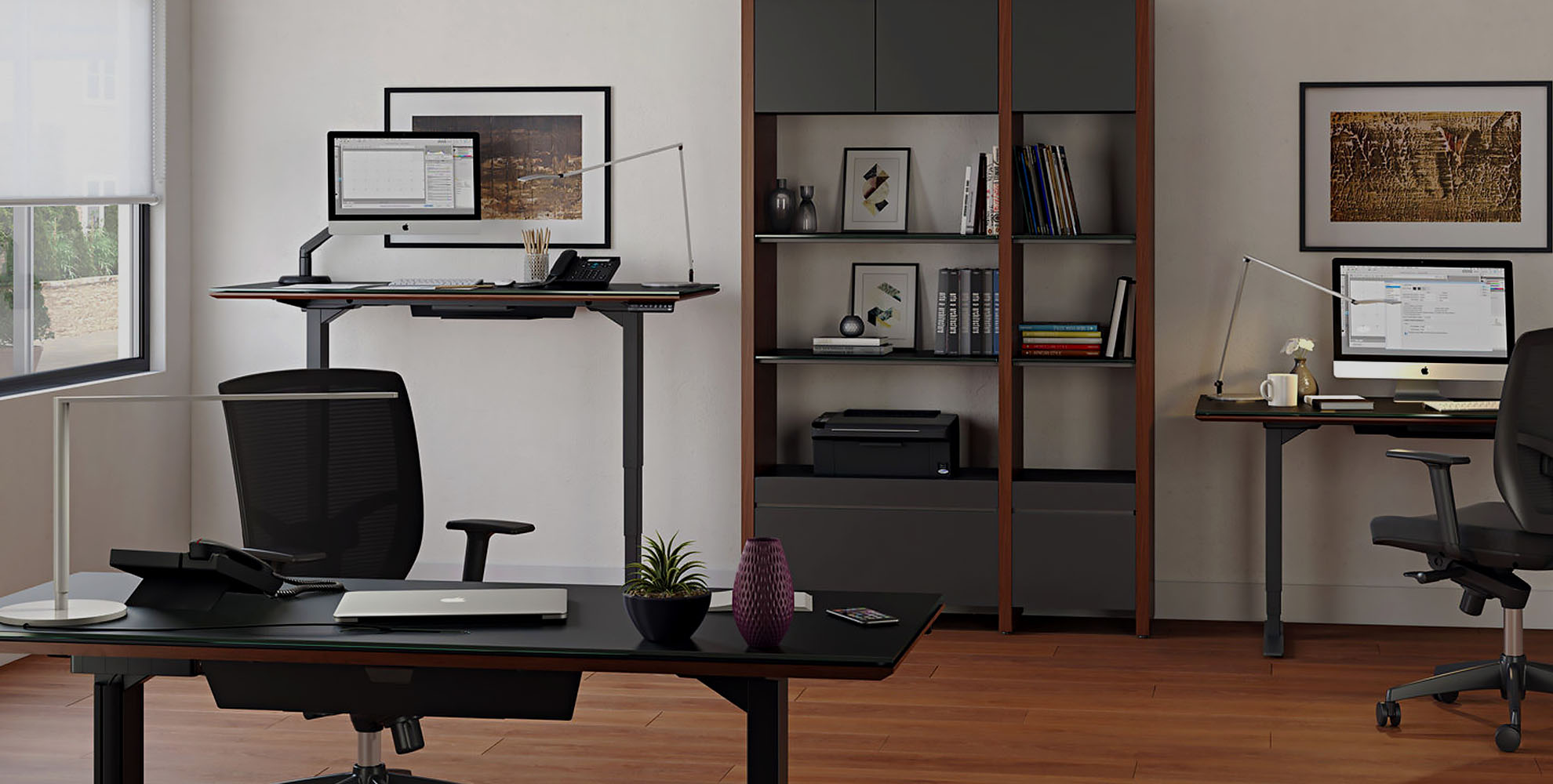
Buyer’s Guide to Sit-Stand Desks
Why stand when you can sit? We say, why choose one or the other? A sit-stand desk does it all, with modern conveniences and great designs for health and harmony.
Like many people, you probably spend most of your day at work, and for most professions that means spending most of the day sitting at a desk. Luckily, workspaces and office furniture are moving away from the traditional and taking a stand with modern furniture that helps promote a healthier work environment.
Sit-to-stand desks are playing a major role in these office transformations, but when selecting the right desk, it can become overwhelming when deciding which desk is right for you and your workspace. But never fear, we are here to take you from sitting to standing by the end of this post.
The Benefits of a Sit-Stand Desk
The most often-cited benefit of a sit-stand desk is that of improved health. Standing improves the body's circulation and, versus sitting, helps you burn more calories and reduces your risk of heart problems. It can also help you to stay more alert and therefore be more productive.
On top of that, the look and technology behind today's sit-stand desks make them a pretty cool addition to modern workspaces. Whether in a formal office setting or at home, many spaces are doing double-duty these days. Sit-stand desks embrace the trend toward spaces that move with you.
Types of Sit-Stand Desks
One way to approximate a sit-stand desk is with an adjustable height monitor/laptop stand; you put it on a standard desk and can lift and lower it manually. One type of true sit-stand desk features a hand crank, which you can turn to raise and lower the desk surface as needed. The final type of sit-to-stand desks has fully automatic, motorized height adjustment; you simply press a button to lift or lower the surface.
Measurements Needed
To choose a sit-stand desk that is comfortable for you and appropriate for your specific workspace, you need to note a few essential dimensions before you start shopping. First, you need to measure the right height and angle of your arms when standing and working. The recommendation for ideal ergonomics is to keep your arms at a 45° angle when typing, with your elbows near waist level.
How big is your monitor/screen? How far back would it and a keyboard need to be to keep your arms in the right position? How large is your overall workspace? The answers to these questions will help you choose the sit-stand desk that's the right width and depth, and that can be adjusted to the right height.
Design Details & Accessories
The variety of materials and finishes available with sit-stand desks means that you should be able to find one that complements your exact design style, from natural and rustic to sleek and ultra-modern. From there, you can decide just how much storage you may want from your desk, whether you want a clean, minimalist surface, or need a place to stash papers and pens.
Many sit-stand desks can help to keep you organized, with subtle storage in the form of slim drawers and discreet cable management. Depending on the desk's placement, you can even add on a modesty panel to keep most of your lower half hidden from view.
How to Properly Use a Sit-Stand Desk
When standing, try to stand at ease (not too stiff), with your arms at the proper 45° angle. And, for all the talk about how bad sitting can be, try to sit down every once in a while. As bad as it is to sit at a desk all day, it's not entirely healthy to stand all day, either. A soft mat can help, but sitting periodically throughout the day is what can really keep you from overstressing your joints and leg muscles.
In short, the best way to use a sit-stand desk is to stand and sit whenever your body tells you it's ready. After all, keeping your body comfortable is one of the best ways to keep your mind focused on your work.







